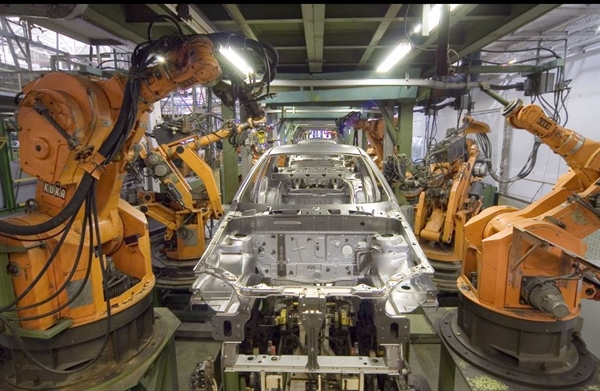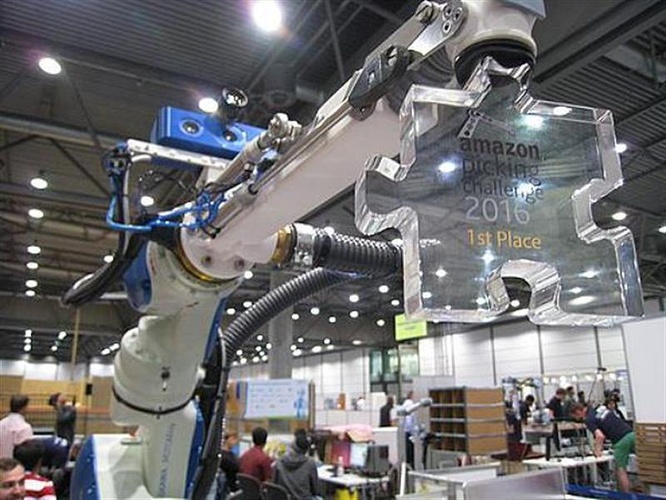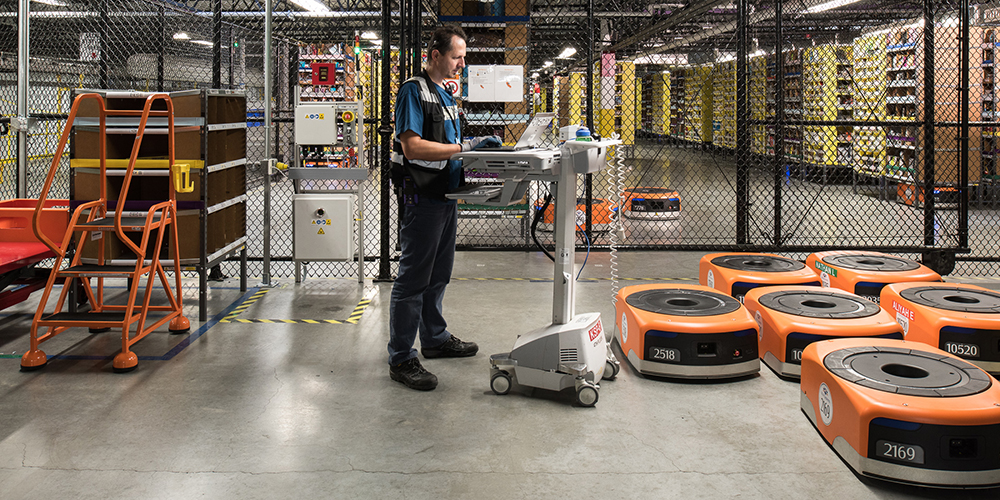
As artificial intelligence and robotics continues to develop, different sectors are beginning to streamline the use of robots into existing processes. But will robots be able to completely replace humans in the workforce? Amazon has explored this idea by holding the Amazon Picking Challenge.
The Challenge
This year, the Amazon Picking Challenge took place in Leipzig, Germany and invited more than a dozen teams from around the world to participate.
The Challenge featured two elements, the ‘Pick Task’ and the ‘Stow Task’. The ‘Pick Task’ required the each team’s robot to pick up and safely deposit 12 items from a mixed shelf into a container in the quickest time possible. The ‘Stow Task’ challenged the robots to move 12 mixed items from a container into bins placed on warehouse shelves.
In order to ensure the adaptability of the robots in completing tasks of varying difficulty, Amazon used 12 differently shaped items in a mix of 40 items in total for the Challenge. As a large warehouse, Amazon workers come across a diverse range of items on a daily basis. By including this aspect to the Challenge, Amazon was able to determine whether the robots had the ability to be flexible when presented with any type of item.
This year, the Challenge was won by Team Delft, a Dutch team which combined the efforts of the TU Delft Robotics Institute of the Netherlands and Delft Robotics. Amazon recognised the team’s use of deep learning in the ‘Pick Task’ which utilises similar software tools to those for facial recognition. Deep learning, an upcoming area of machine learning, searches for recurring patterns within huge amounts of data to identify objects using the appropriate picking and packing strategies.
 Source: Team Delft's winning robot.
Source: Team Delft's winning robot.
Future of Human Workers
Essentially, the Challenge was designed to assist Amazon in creating a new form of robotic technology which could perform repetitive tasks in warehouses. At face value, this would mean Amazon could substantially reduce the number of people currently employed to pack and unload boxes. However, such unemployment concerns have been dismissed.
Amazon firmly believes that robotic technology will only serve to enhance the job for employees but not replace them. The company reassures that it will continue to hire people as the roles in its warehouses will require employees to be working in cooperation with robotic technology. To reinforce this, Amazon has drawn upon its acquisition of Kiva (a robotics firm) in 2012 which saw an increase in the number of employees in its warehouses.
 Source: An Amazon employee working with Kiva robots.
Source: An Amazon employee working with Kiva robots.
Several other researchers have supported Amazon’s claims. Carlos Corbato, a prominent member of Team Delft, stated that human workers will be needed in complex environments (such as Amazon’s warehouses) to analyse unexpected problems which can’t be dealt with by robots.
Despite this, critics have speculated that while the cooperation of people and robots in the workforce may be feasible in the short term, the long term trajectory shows a different story. Researchers predict the complete replacement of people in certain sectors as robotic technology further advances and becomes more refined, making it a feasible and cost-effective alternative for large-scale companies.
At Horizon, we are passionate about the new and innovative ways for warehouse management.
We’re interested to know how you think robotic technology can fit into existing processes. Will people still have a place in the workforce?
Leave us a comment below!